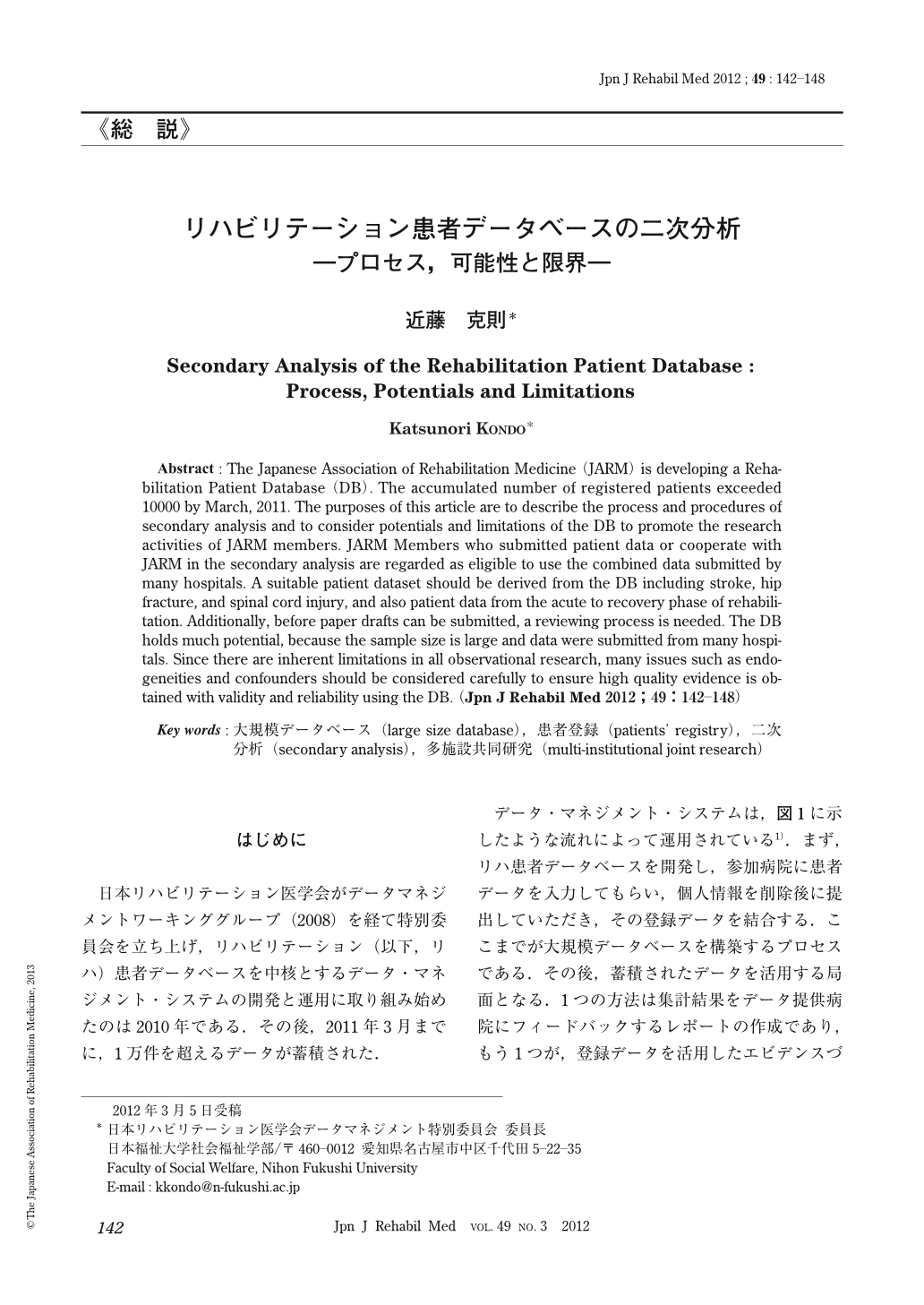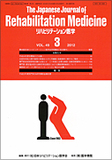Japanese
English
- 販売していません
- Abstract 文献概要
- 1ページ目 Look Inside
- 参考文献 Reference
はじめに
日本リハビリテーション医学会がデータマネジメントワーキンググループ(2008)を経て特別委員会を立ち上げ,リハビリテーション(以下,リハ)患者データベースを中核とするデータ・マネジメント・システムの開発と運用に取り組み始めたのは2010年である.その後,2011年3月までに,1万件を超えるデータが蓄積された.
データ・マネジメント・システムは,図1に示したような流れによって運用されている1).まず,リハ患者データベースを開発し,参加病院に患者データを入力してもらい,個人情報を削除後に提出していただき,その登録データを結合する.ここまでが大規模データベースを構築するプロセスである.その後,蓄積されたデータを活用する局面となる.1つの方法は集計結果をデータ提供病院にフィードバックするレポートの作成であり,もう1つが,登録データを活用したエビデンスづくりである.
リハ患者データベースの登録データを活用した研究論文として,本学会誌への記念すべき第1号となるのが今号掲載の曽川論文2)である.学会が,データ・マネジメント・システムを開発し運用するねらいの1つは,リハ医学医療のエビデンスづくりのための研究基盤整備である1).今後もデータベースが多くの会員に利用され,そこから多くの研究成果が発表されることが期待されている.そこで,小論では,リハ患者データベースの大規模データを活用する研究のプロセス(データ利用申請から分析,発表に至る流れや手続き)を紹介した後,多施設による大規模データの強み(可能性)と限界を踏まえた分析上の注意などについて述べる.
Abstract : The Japanese Association of Rehabilitation Medicine (JARM) is developing a Rehabilitation Patient Database (DB). The accumulated number of registered patients exceeded 10000 by March, 2011. The purposes of this article are to describe the process and procedures of secondary analysis and to consider potentials and limitations of the DB to promote the research activities of JARM members. JARM Members who submitted patient data or cooperate with JARM in the secondary analysis are regarded as eligible to use the combined data submitted by many hospitals. A suitable patient dataset should be derived from the DB including stroke, hip fracture, and spinal cord injury, and also patient data from the acute to recovery phase of rehabilitation. Additionally, before paper drafts can be submitted, a reviewing process is needed. The DB holds much potential, because the sample size is large and data were submitted from many hospitals. Since there are inherent limitations in all observational research, many issues such as endogeneities and confounders should be considered carefully to ensure high quality evidence is obtained with validity and reliability using the DB.

Copyright © 2012, The Japanese Association of Rehabilitation Medicine. All rights reserved.


